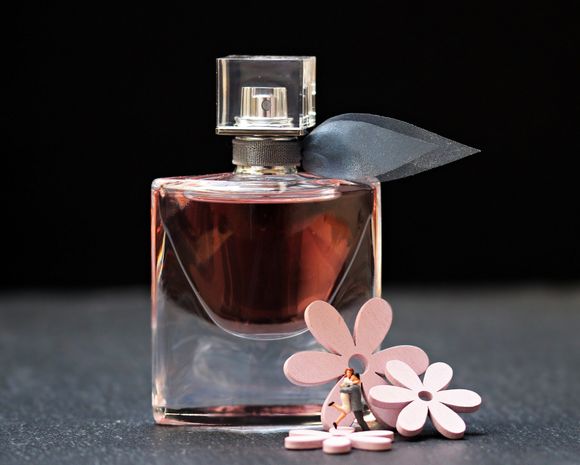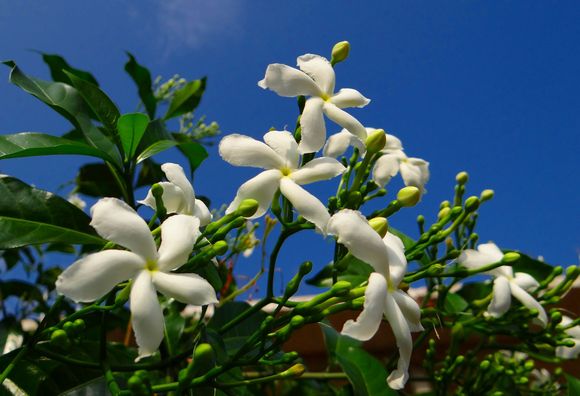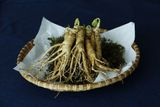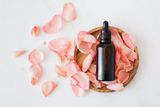Author: Sylvia Marinova, PhD student in the "Genomic Stability" lab at BAS
Jasmine has been known for its aroma for centuries. This is why it is widely used in perfumery and aromatherapy. In addition, it has many traditional applications as a remedy.
Read more in the article Aromatherapy - home-made applications
Jasmine Species
Jasmine is an evergreen plant belonging to the olive family. One well-known variety is the Spanish jasmine (Jasminum grandiflorum), also known as Royal or Catalan jasmine. It originated in Kashmir and Persia, but is widespread today. The plant is bushy, evergreen with small white flowers that are highly fragrant.
Another popular species is the Asian variety (Jasminum sambac), which is widely grown in India and in the tropical regions of the two hemispheres. The wild plant is found as a liana, and its flowers are small and white. In contrast, cultivated Asian jasmine is bushy and has larger flowers that can be colored in white, pink or yellow. They are used for the preparation of jasmine tea.
Jasmine Essential Oil

Jasmine essential oil has a floral and sweet aroma, which is used in the perfumes of famous brands such as Chanel, Dior, Mitsuko,etc. For the purposes of perfumery, the royal jasmine mentioned at the beginning is mainly used, as well as the ordinary jasmine (Jasminum officinale) .v
To obtain 1 kg of the oil, about 1 ton of jasmine flowers are needed. Moreover, keeping this rich note in the finished product is also very difficult. That is why these perfumes are so expensive.
In addition to perfumery, jasmine essential oil is also used for therapeutic purposes in aromatherapy.Its traditional uses are:
- sedative [ref.1]
- antiseptic (against the occurrence of infections) - a study from 2008 shows the antibacterial effect of jasmine oil on the growth of the bacterium E.coli, possibly due to suppression of the synthesis of its cell wall [ref.2].
- to soothe the nervous system - jasmine is considered to positively affect the state of the nervous system, lifts the mood and helps relieve stress.
- as an aphrodisiac - there is no scientific evidence for this property, but traditional use has been known for a long time, especially in India.
Among the active ingredients of jasmine essential oil are: methyl jasmonate, indole, linalol, geraniol, jasmolactone, etc.
Jasmine Healing Properties
Jasmine is an important plant in traditional medicine, and in addition some of its properties have been proven by science. The plant has antioxidant, antibacterial, antiviral, analgesic, antispasmodic anti-inflammatory, intoxicating action and helps healwounds . In general, various types of extracts from the roots, leaves and colors are used in:
- superficial wounds
- skin diseases
- acne
- painful menstruation (dysmenorrhea)
- ulcers on the mucous membranes of the mouth and gums
- excessive gas
- constipation
- stress
- anxiety and depression
- cough
- to stimulate the secretion of mammary glands, etc.
Anti-Cancer Properties
In traditional medicine of India, jasmine has long been used to prevent and treat breast cancer. However, its cancer properties have not been well studied and there is a long way to go. For example, a research group from India treated with alcohol extracts of the species J.sambac healthy and lymphoma-sick mouse models [ref.3]. Researchers tracked different blood counts as well as tissue from the mouse liver and showed statistically significant differences between treated and controlanimals. However, the models examined were very few and more studies are needed to confirm the results.
Method Of Use

Some ideas for home use of essential oil:
- for massages - add 8-9 drops of it in 100 ml of base oil
- for a soothing bath - 2-3 drops of oil in the water are enough to achieve a relaxing effect
- in diffuser - to flavor the home after a hard day
Jasmine tea:
- one tablespoon of dried jasmine flowers are added to 500 ml of hot but not boiling water
Contraindications
Allergic reactions to jasmine are possible.
Sometimes dizziness and headaches can be observed.
It is not recommended to take in large doses due to the sedative and intoxicating effect, which can cause lethargy and drowsiness.








